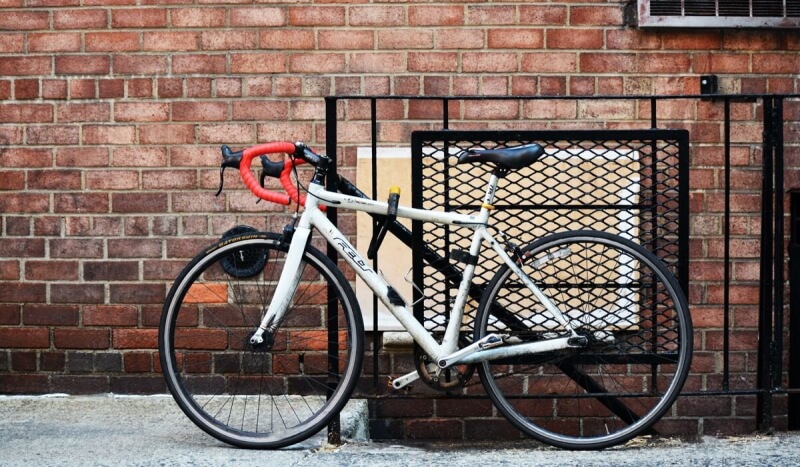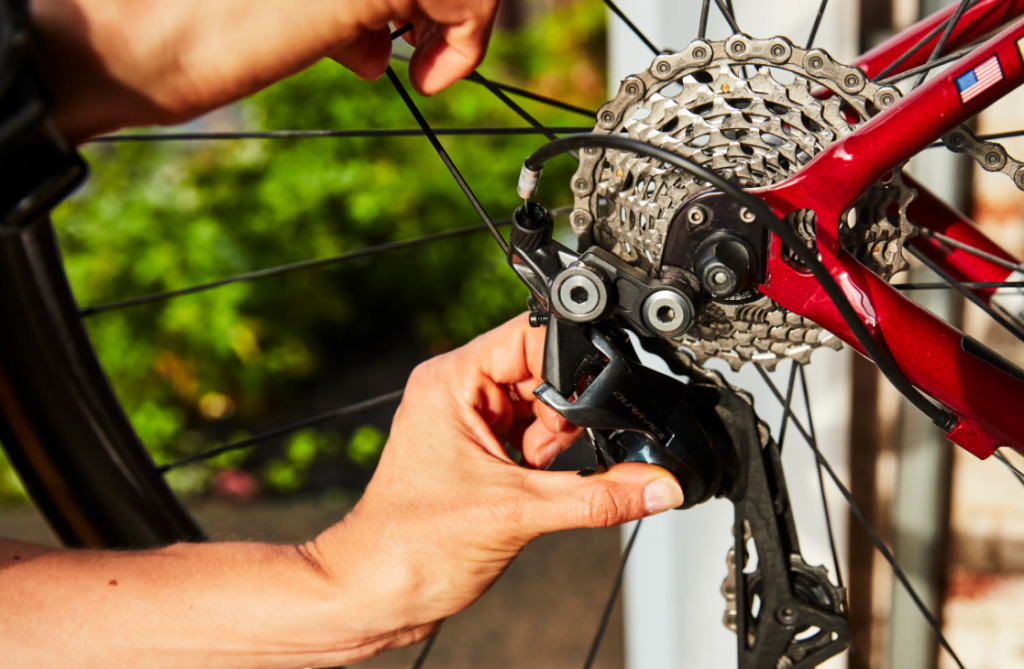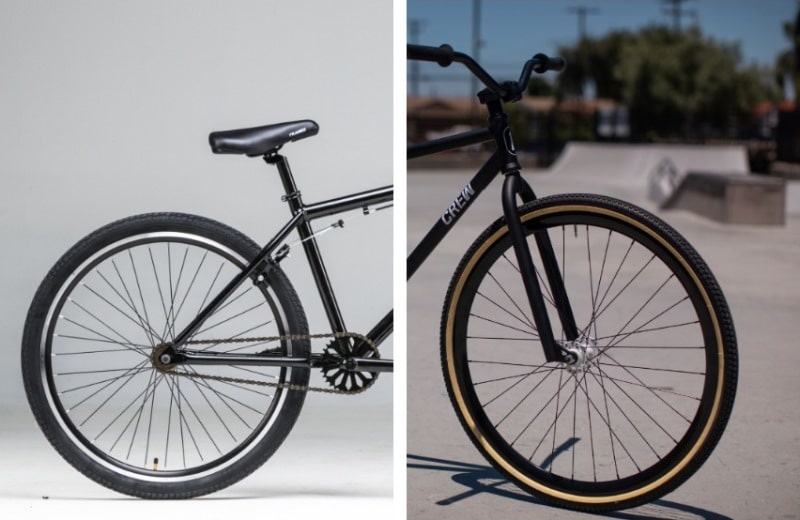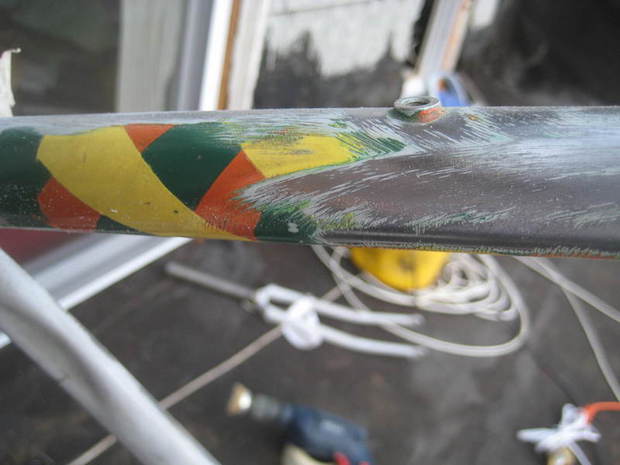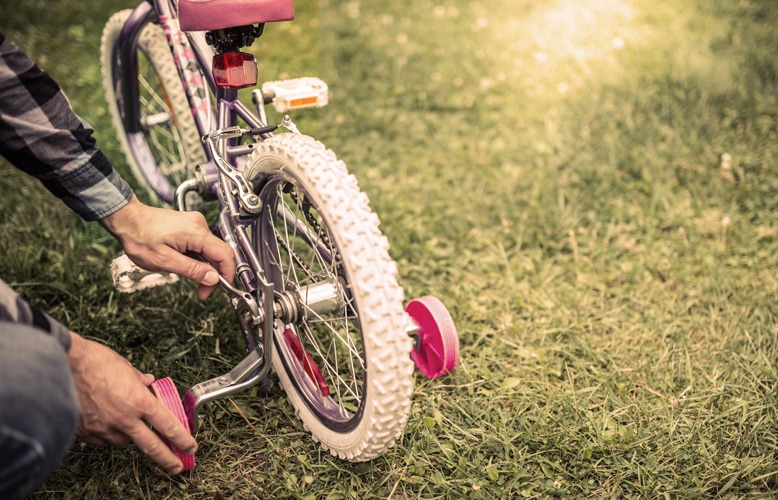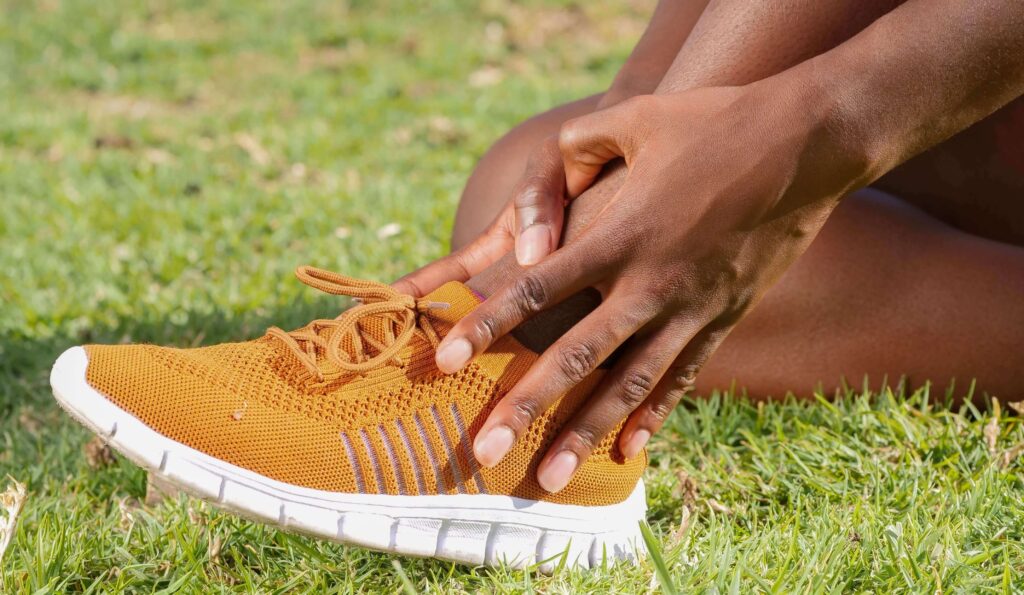- Trails
-
Bikes
-
Gear
-
Tips & Tricks
-
About us



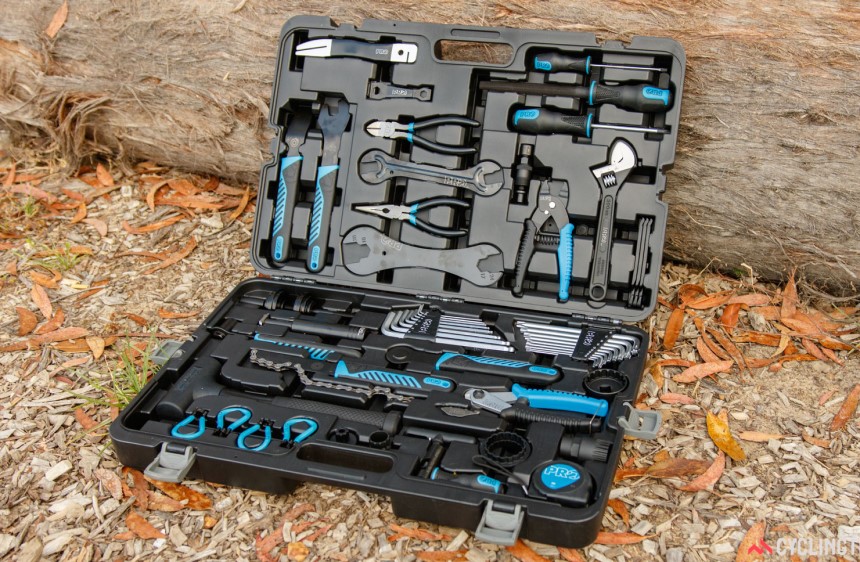 Removing an old derailleur
Removing an old derailleur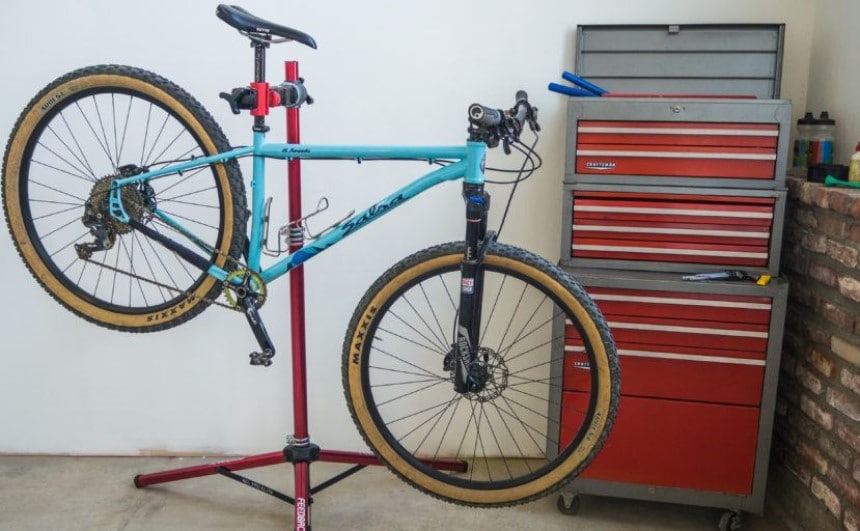 Step 2
Step 2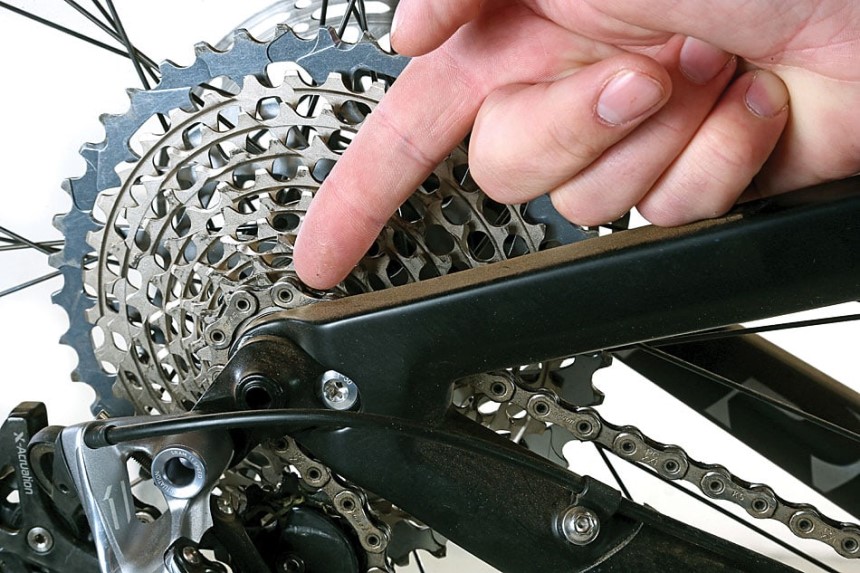 Step 3
Step 3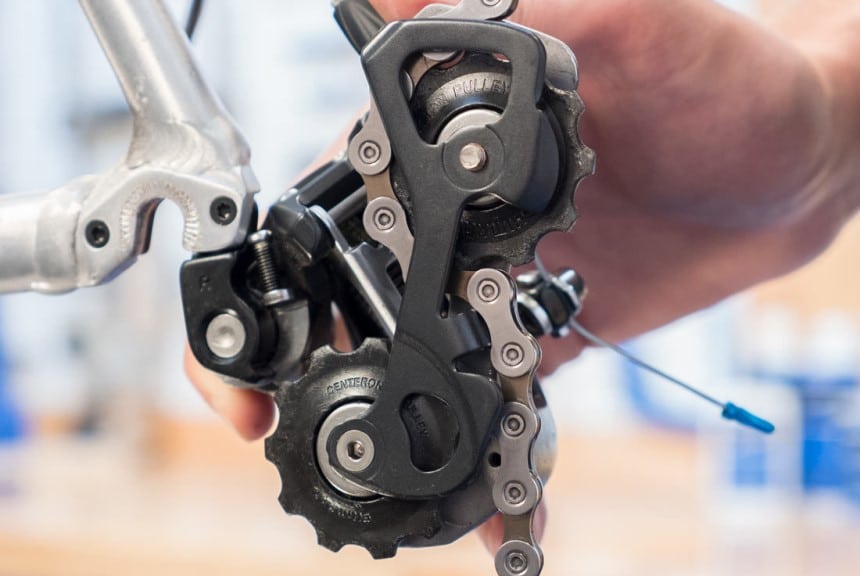 Step 4
Step 4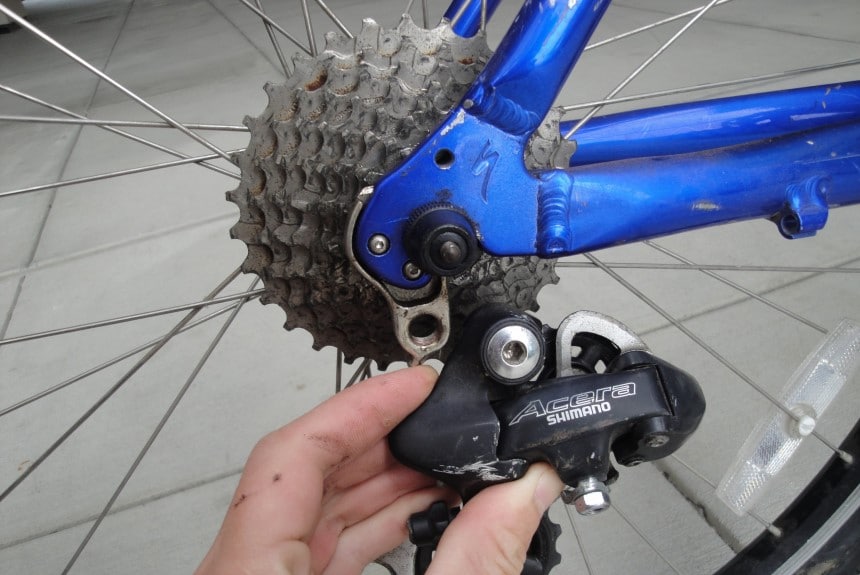 Installing a new derailleur
Installing a new derailleur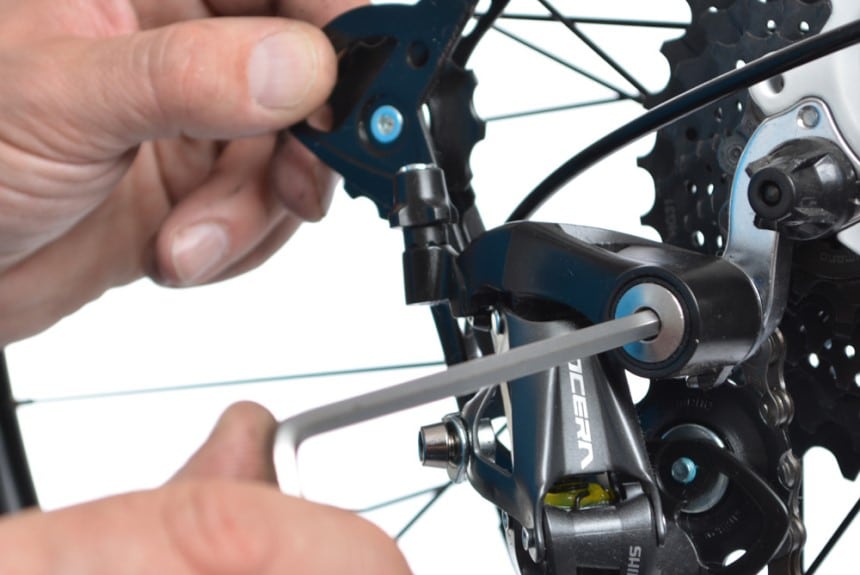 Step 2. Putting the chain on
Step 2. Putting the chain on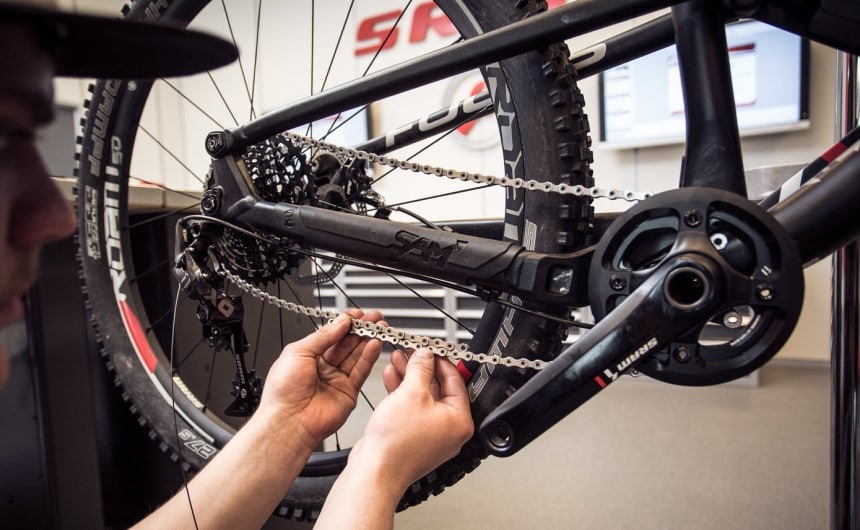 Step 3. Setting the limit screws
Step 3. Setting the limit screws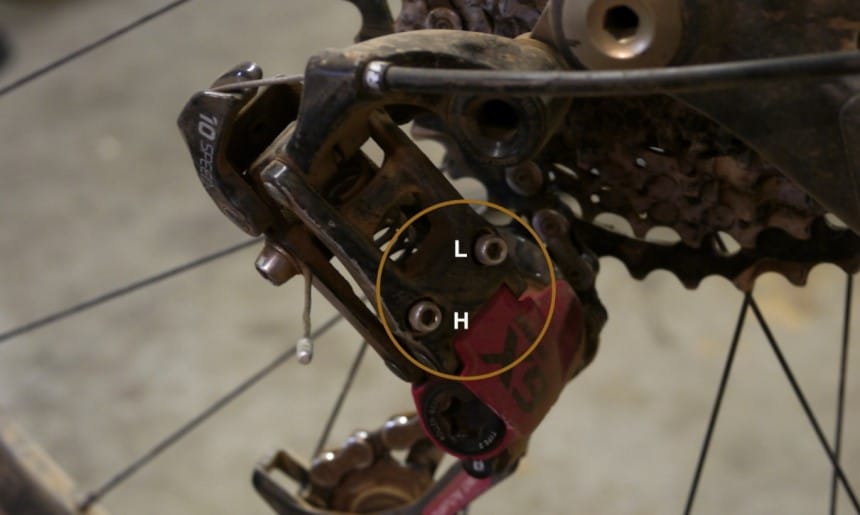 Step 4. Putting the shift cable
Step 4. Putting the shift cable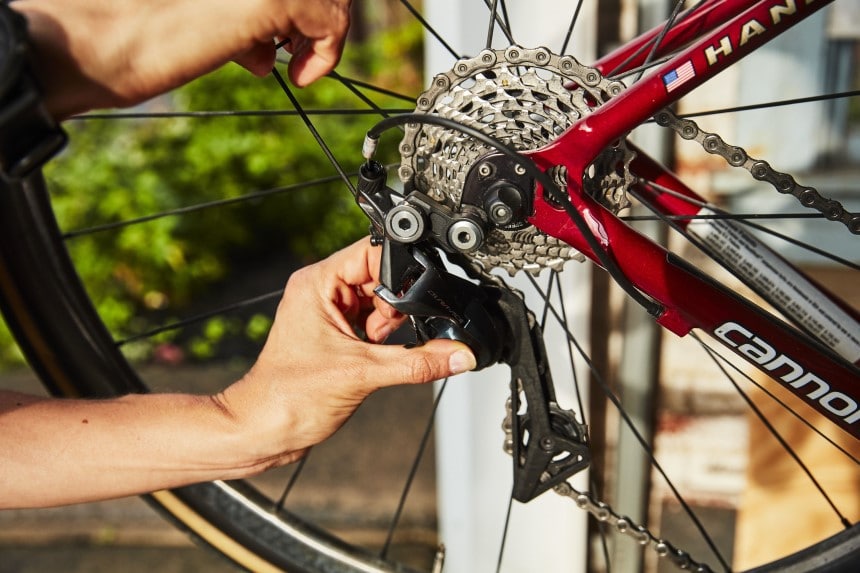 After successfully installing the new derailleur, you must adjust it and test it. You can do this by ensuring the upper jockey wheel is in line with the smallest cog when you look from behind.
After successfully installing the new derailleur, you must adjust it and test it. You can do this by ensuring the upper jockey wheel is in line with the smallest cog when you look from behind.




